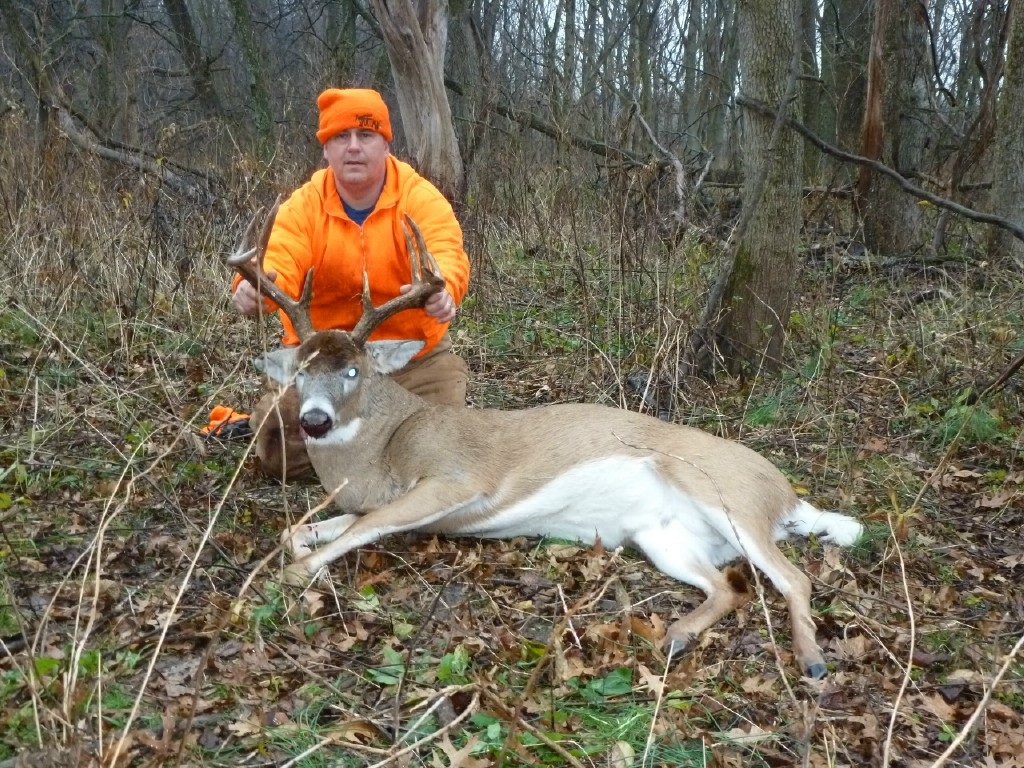Hunters rely on sound advice on ways to kill a deer. That’s all fine and dandy, but hunters don’t often think about the things they’re doing wrong that prevent them from killing a deer. By knowing how not to kill a deer, perhaps we can turn that knowledge around and use it to kill a deer. Reverse psychology at its best.
If you don’t want to kill a deer, don’t scout.
I was told as a young hunter that in order to kill deer on a regular basis I must scout. That is one statement that still holds true all these years later.

Having confidence in your hunting area allows a hunter to stay put. The only way to build confidence is by scouting. Your best chance to kill a deer from any particular location is the first day you hunt at it. On each day after the first, your chances decrease. Make the most out of the first day afield.
The best time to scout is as soon as season is over. Deer sign is still fresh and easy to locate and should remain close to the same the next season. Shed hunting is another great way to find out what bucks survived the season as well as provide an enjoyable day outdoors. Trail cameras offer year-round scouting opportunities, and glassing from afar is a great tool to use in the summer.
If you don’t want to kill a deer, don’t worry about scent control.
The best way to combat a whitetail’s nose is with proper personal hygiene. This is simple enough. Shower before your hunt with scent-free soaps, shampoo, and deodorant. Dry off with towels that are scent-free. Wear clothing that has been washed in scent-free detergent and air-dried. Once dry, spray down with scent-elimination spray and store in scent-free bags or bins. Don’t wear cologne. There’s a time and place for such fragrances, and the deer stand is not it.
Don’t overdress as you walk to your stand. Wear the minimum amount of clothing and finish dressing once you arrive to your stand. This will cut back on the amount you sweat. Also, don’t drive while wearing your hunting boots. Change into them after you arrive at your destination. This will prevent gas, food, and other foreign odors from contaminating your footwear.

Before beginning the walk to your stand, spray yourself down from head to the sole of your boots with scent-elimination spray. Don’t forget to spray your equipment, too. This is also a good time to use a drag rag sprayed with a cover-up scent. Spray yourself with scent-elimination spray again at your stand when you’re fully dressed before you climb to your perch.
If you don’t want to kill a deer, don’t have realistic practice sessions.
I’ll frequently pick up my bow in the middle of summer and shoot a few arrows. I am hitting the bull’s-eye. However, this is not how hunting is.

In order to be confident in our shooting abilities, we need to practice in realistic hunting conditions.
This entails shooting while wearing a complete hunting outfit (even in the heat of summer), and shooting from an elevated platform and/or from inside a ground blind. Don’t forget to practice with your broadheads well before season opens. They will hit differently than field points. Practicing in advance will give you plenty of time to correct any problems.
Instead of shooting from known distances at broad-side targets, make it real. As nice as it would be to have every deer standing broadside at 20 yards, that doesn’t happen all that often. To simulate realistic hunting conditions, practice shooting from unknown distances at different angles. Deer will often offer shots quartering to and away, rather than broadside.
Practicing in real-world hunting conditions is a great confidence builder when it’s the moment of truth.
If you don’t want to kill a deer, don’t be prepared.
You can have done all the scouting possible and have the deer figured out to a T. Practice sessions have you putting arrows in the bull’s-eye every time. You have scent control down as close to a science as you can. But if you’re not focused on what’s going on around you, you will not be prepared to shoot.
A case of boredom can mean the difference between killing a deer and not. Why boredom? It’s all the fault of smart phones. Hunters can easily puck up their phone while on stand, and instead on concentrating on hunting, they concentrate on social media, checking e-mails, and playing games.
There’s no easy solution for this except to leave the phone in your pocket. I don’t recommend leaving the phone at home. Now that we have the technology to call for help if an accident occurs, it only makes sense to keep our phone close. It’s up to us to keep it on silent and to practice self-restraint by keeping it in our pocket unless it’s absolutely necessary to use it. One of the best times to use it is to call for help to load the big buck, and to snap a few photos of it.
Now that you have a good idea what to do if you don’t want to kill a deer, you can use that information to kill one. Don’t worry; it’s not confusing as it sounds.
Tell us what you think in the comments section below.









![The Best Deer Camp Chili [VIDEO] Deer Chili Ingredients, Tomatoes, Chili Spices](/wp-content/uploads/2015/10/Deer-Chili-Deer-Camp-Recipe-218x150.jpg)








![How to Call Elk Early in the Season [VIDEO]](/wp-content/uploads/2016/08/byers003-218x150.jpg)




![Idiots Disturb Hunter: How Would You Have Handled It? [VIDEO]](/wp-content/uploads/2015/10/DSC00110-e1474487693878-100x70.jpg)
![Albino Buck Shocked to Shed His Antlers [VIDEO]](/wp-content/uploads/2015/10/AlbinoDeer-100x70.jpg)